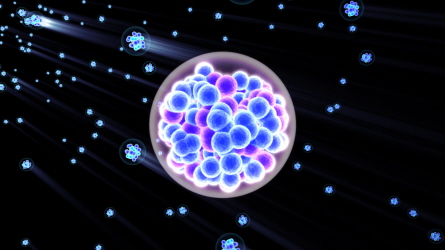The newest superheavy in town
Superheavy element forged in lab is a first.
Scientists around the world are on a quest to find all the elements possible in the universe. Everything is made of elements. So understanding elements is a way of understanding all the matter around us. Some elements, such as hydrogen or oxygen, can be found easily on Earth. Others, especially atoms that are heavier than uranium, are hard to study. They have to be made in the lab. And even then, these usually decay. (That means they eventually will break down into other smaller atoms.)
Recently, a team of physicists from Russia and the United States created a never-before-seen superheavy element in the laboratory. Right now, it’s known simply as “element 117” or “ununseptium.” The experiment was led by Yuri Oganessian. He’s a physicist at the Joint Institute for Nuclear Research in Dubna, Russia.
Sigurd Hofmann, a nuclear physicist in Darmstadt, Germany, told Science News that the results are “convincing.”
Those names for the element are not official. A new element doesn’t receive an official name until more teams of scientists can also make that element in the laboratory. This stage of the scientific process, called verification, is important. It ensures that the original experiment was not a fluke. Verification can take a long time. In February of this year, for example, element 112 finally received the official name “Copernicium.” It had been first identified four years ago.
At the center of every atom is a nucleus. Inside it are particles called neutrons and protons. Each element has a characteristic number of protons. And within each atom of the newly created element are 117 protons. That’s why it is called “element 117.”
 |
|
This illustration shows the newly found element that formed when berkelium atoms were bombarded by calcium atoms. See an animation of the bombardment.
|
| From animation by Kwei-Yu Chu/Lawrence Livermore National Laboratory |
The new element was created at the Joint Institute for Nuclear Research in a machine called a cyclotron. A cyclotron may sound like a roller coaster — and for atoms, it is a wild ride. A cyclotron smashes together different kinds of elements at super-high speeds. Scientists then watch to see what happens just after the crash.
Here, the scientists used a cyclotron to bombard atoms of berkelium with atoms of calcium. They started with an isotope, or variation, of berkelium (berkelium-249). Then they collided it with an isotope of calcium, calcium-48. (The calcium isotope had 28 neutrons compared with calcium’s usual 20. Add that to the usual 20 protons in calcium, and you have calcium-48.)
Berkelium is a heavy element that does not occur in nature. So it also had to be created in a laboratory. In fact, berkelium was created in a laboratory in Tennessee, then transported around the world to Russia for this experiment.
And what an experiment it was: For 150 days, the scientists smashed calcium-48 atoms into berkelium-249 atoms. The experiment yielded exactly six atoms of element 117, reported scientists at Oak Ridge National Laboratory. That’s the Tennessee lab where some of the other scientists on this project work. Those six atoms didn’t last very long: After a tiny fraction of a second, all had decayed.
A heavy atom decays when its nucleus breaks apart. What results are smaller atoms. These have fewer protons in their nuclei than were in the original hefty atom.
It may seem like the researchers went through a lot of work for six rare atoms that quickly vanished. Yet it remains a triumph. Physicists had been looking for element 117 for a long time. Although both elements 116 and 118 had already been made in a laboratory, element 117 had remained elusive.
Almost all heavy elements decay quickly. Still, scientists are excited because superheavy elements such as 116, 117 and 118 don’t vanish as quickly as other superheavies. Scientists had been hoping to find a group of these atoms together. Such a group would be a step toward finding an “island of stability” on the Periodic Table, and element 117 may be part of the group.
Going Deeper:
Witze, Alexandra. 2010. “Superheavy element 117 makes debut,” Science News, April 24. http://www.sciencenews.org/view/generic/id/57964/title/BREAKING_NEWS_Superheavy_element_117_makes_debut
Ornes, Stephen. 2010. “Heaviest named element is official,” Science News for Kids, March 15. http://sciencenews.org/view/generic/id/57303/title/FOR_KIDS_Heaviest_named_element_is_official
Ornes, Stephen. 2008. “The particle zoo,” Science News for Kids, June 25. http://www.sciencenewsforkids.org/articles/20080625/Note2.asp
Witze, Alexandra. 2010. “The backstory behind a new element.” Science News, April 12. http://www.sciencenews.org/view/generic/id/58239/title/Deleted_Scenes__The_backstory_behind_a_new_element







